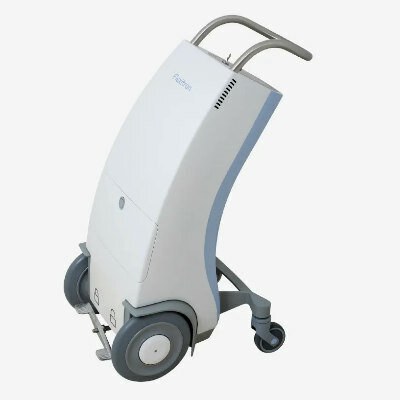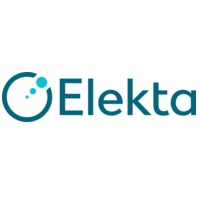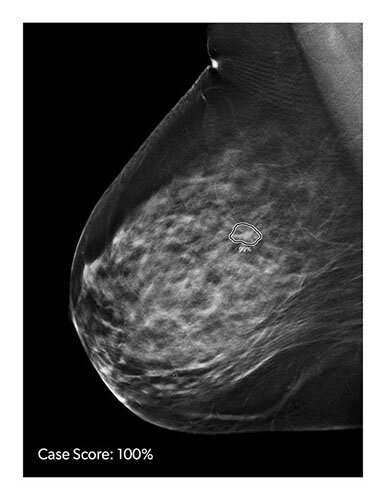AI-Driven Software Uses CT Scans to Determine Extent of Brain Injury in Stroke Patients
|
By MedImaging International staff writers Posted on 05 Nov 2019 |

Image: The e-ASPECTS software uses AI algorithms to automatically identify and quantify acute ischemic core within seconds of the scan acquisition (Photo courtesy of Brainomix).
A new study has shown that an artificial intelligence (AI) driven software can reliably tell doctors how much brain is injured in stroke patients using universally available CT scans, without the need for more complex advanced imaging.
The study, conducted by physicians from a number of leading German hospitals, looked at scans and clinical information from 388 patients using the latest version of the e-ASPECTS software developed by Brainomix (Oxford, UK). The e-ASPECTS software is one of three modules comprising Brainomix's e-Stroke Suite, the most comprehensive imaging solution that empowers clinicians across all stages of the stroke patient pathway and supports the thrombectomy decision-making process, from non-contrast CT interpretation, to collateral assessments and LVO detection, to more advanced perfusion-based assessments.
e-ASPECTS uses AI algorithms to automatically identify and quantify acute ischemic core within seconds of the scan acquisition. Ischemic core volume is increasingly being used by doctors to select treatment for stroke patients, particularly for those presenting outside traditional treatment time windows. Until now, such information has only been available at hospitals with urgent access to advanced imaging resources, limiting the provision of advanced stroke care to a minority of patients.
“The study results show that e-ASPECTS volume provides a robust assessment of the early brain injury in stroke patients using only non-contrast CT scans, without the need for difficult-to-access advanced imaging. This is vitally important, as the vast majority of hospitals around the world do not have advanced imaging in their Emergency Departments,” said Dr. George Harston, Chief Medical Officer and Innovation Officer for Brainomix, and stroke physician at Oxford University Hospitals NHS Foundation Trust. “Even for those hospitals that do have advanced imaging hardware, it is often slow and can introduce delays to time-critical stroke treatments. This study exemplifies the revolutionary way that the e-Stroke Suite uses AI to leverage more information out of the data that hospitals are already acquiring, but just not utilizing. This technology can give doctors in any hospital worldwide more information to help them treat stroke patients better.”
Related Links:
Brainomix
The study, conducted by physicians from a number of leading German hospitals, looked at scans and clinical information from 388 patients using the latest version of the e-ASPECTS software developed by Brainomix (Oxford, UK). The e-ASPECTS software is one of three modules comprising Brainomix's e-Stroke Suite, the most comprehensive imaging solution that empowers clinicians across all stages of the stroke patient pathway and supports the thrombectomy decision-making process, from non-contrast CT interpretation, to collateral assessments and LVO detection, to more advanced perfusion-based assessments.
e-ASPECTS uses AI algorithms to automatically identify and quantify acute ischemic core within seconds of the scan acquisition. Ischemic core volume is increasingly being used by doctors to select treatment for stroke patients, particularly for those presenting outside traditional treatment time windows. Until now, such information has only been available at hospitals with urgent access to advanced imaging resources, limiting the provision of advanced stroke care to a minority of patients.
“The study results show that e-ASPECTS volume provides a robust assessment of the early brain injury in stroke patients using only non-contrast CT scans, without the need for difficult-to-access advanced imaging. This is vitally important, as the vast majority of hospitals around the world do not have advanced imaging in their Emergency Departments,” said Dr. George Harston, Chief Medical Officer and Innovation Officer for Brainomix, and stroke physician at Oxford University Hospitals NHS Foundation Trust. “Even for those hospitals that do have advanced imaging hardware, it is often slow and can introduce delays to time-critical stroke treatments. This study exemplifies the revolutionary way that the e-Stroke Suite uses AI to leverage more information out of the data that hospitals are already acquiring, but just not utilizing. This technology can give doctors in any hospital worldwide more information to help them treat stroke patients better.”
Related Links:
Brainomix
Latest Industry News News
- Bayer and Google Partner on New AI Product for Radiologists
- Samsung and Bracco Enter Into New Diagnostic Ultrasound Technology Agreement
- IBA Acquires Radcal to Expand Medical Imaging Quality Assurance Offering
- International Societies Suggest Key Considerations for AI Radiology Tools
- Samsung's X-Ray Devices to Be Powered by Lunit AI Solutions for Advanced Chest Screening
- Canon Medical and Olympus Collaborate on Endoscopic Ultrasound Systems
- GE HealthCare Acquires AI Imaging Analysis Company MIM Software
- First Ever International Criteria Lays Foundation for Improved Diagnostic Imaging of Brain Tumors
- RSNA Unveils 10 Most Cited Radiology Studies of 2023
- RSNA 2023 Technical Exhibits to Offer Innovations in AI, 3D Printing and More
- AI Medical Imaging Products to Increase Five-Fold by 2035, Finds Study
- RSNA 2023 Technical Exhibits to Highlight Latest Medical Imaging Innovations
- AI-Powered Technologies to Aid Interpretation of X-Ray and MRI Images for Improved Disease Diagnosis
- Hologic and Bayer Partner to Improve Mammography Imaging
- Global Fixed and Mobile C-Arms Market Driven by Increasing Surgical Procedures
- Global Contrast Enhanced Ultrasound Market Driven by Demand for Early Detection of Chronic Diseases
Channels
Radiography
view channel
Novel Breast Imaging System Proves As Effective As Mammography
Breast cancer remains the most frequently diagnosed cancer among women. It is projected that one in eight women will be diagnosed with breast cancer during her lifetime, and one in 42 women who turn 50... Read more
AI Assistance Improves Breast-Cancer Screening by Reducing False Positives
Radiologists typically detect one case of cancer for every 200 mammograms reviewed. However, these evaluations often result in false positives, leading to unnecessary patient recalls for additional testing,... Read moreMRI
view channel
PET/MRI Improves Diagnostic Accuracy for Prostate Cancer Patients
The Prostate Imaging Reporting and Data System (PI-RADS) is a five-point scale to assess potential prostate cancer in MR images. PI-RADS category 3 which offers an unclear suggestion of clinically significant... Read more
Next Generation MR-Guided Focused Ultrasound Ushers In Future of Incisionless Neurosurgery
Essential tremor, often called familial, idiopathic, or benign tremor, leads to uncontrollable shaking that significantly affects a person’s life. When traditional medications do not alleviate symptoms,... Read more
Two-Part MRI Scan Detects Prostate Cancer More Quickly without Compromising Diagnostic Quality
Prostate cancer ranks as the most prevalent cancer among men. Over the last decade, the introduction of MRI scans has significantly transformed the diagnosis process, marking the most substantial advancement... Read moreUltrasound
view channel
Deep Learning Advances Super-Resolution Ultrasound Imaging
Ultrasound localization microscopy (ULM) is an advanced imaging technique that offers high-resolution visualization of microvascular structures. It employs microbubbles, FDA-approved contrast agents, injected... Read more
Novel Ultrasound-Launched Targeted Nanoparticle Eliminates Biofilm and Bacterial Infection
Biofilms, formed by bacteria aggregating into dense communities for protection against harsh environmental conditions, are a significant contributor to various infectious diseases. Biofilms frequently... Read moreNuclear Medicine
view channel
New SPECT/CT Technique Could Change Imaging Practices and Increase Patient Access
The development of lead-212 (212Pb)-PSMA–based targeted alpha therapy (TAT) is garnering significant interest in treating patients with metastatic castration-resistant prostate cancer. The imaging of 212Pb,... Read moreNew Radiotheranostic System Detects and Treats Ovarian Cancer Noninvasively
Ovarian cancer is the most lethal gynecological cancer, with less than a 30% five-year survival rate for those diagnosed in late stages. Despite surgery and platinum-based chemotherapy being the standard... Read more
AI System Automatically and Reliably Detects Cardiac Amyloidosis Using Scintigraphy Imaging
Cardiac amyloidosis, a condition characterized by the buildup of abnormal protein deposits (amyloids) in the heart muscle, severely affects heart function and can lead to heart failure or death without... Read moreGeneral/Advanced Imaging
view channel
New AI Method Captures Uncertainty in Medical Images
In the field of biomedicine, segmentation is the process of annotating pixels from an important structure in medical images, such as organs or cells. Artificial Intelligence (AI) models are utilized to... Read more.jpg)
CT Coronary Angiography Reduces Need for Invasive Tests to Diagnose Coronary Artery Disease
Coronary artery disease (CAD), one of the leading causes of death worldwide, involves the narrowing of coronary arteries due to atherosclerosis, resulting in insufficient blood flow to the heart muscle.... Read more
Novel Blood Test Could Reduce Need for PET Imaging of Patients with Alzheimer’s
Alzheimer's disease (AD), a condition marked by cognitive decline and the presence of beta-amyloid (Aβ) plaques and neurofibrillary tangles in the brain, poses diagnostic challenges. Amyloid positron emission... Read more.jpg)
CT-Based Deep Learning Algorithm Accurately Differentiates Benign From Malignant Vertebral Fractures
The rise in the aging population is expected to result in a corresponding increase in the prevalence of vertebral fractures which can cause back pain or neurologic compromise, leading to impaired function... Read moreImaging IT
view channel
New Google Cloud Medical Imaging Suite Makes Imaging Healthcare Data More Accessible
Medical imaging is a critical tool used to diagnose patients, and there are billions of medical images scanned globally each year. Imaging data accounts for about 90% of all healthcare data1 and, until... Read more



















